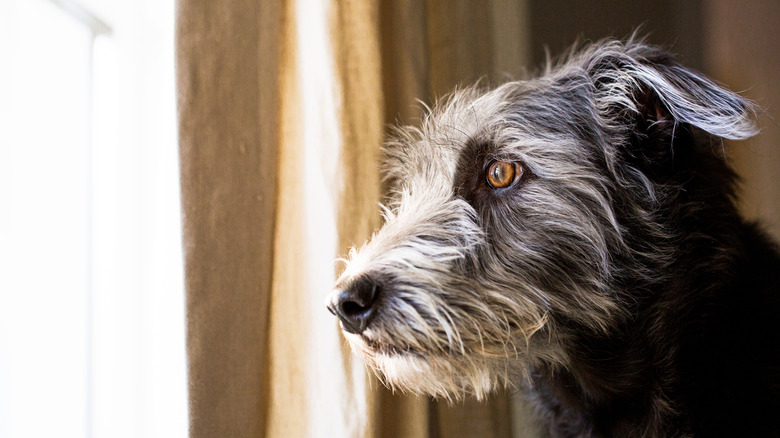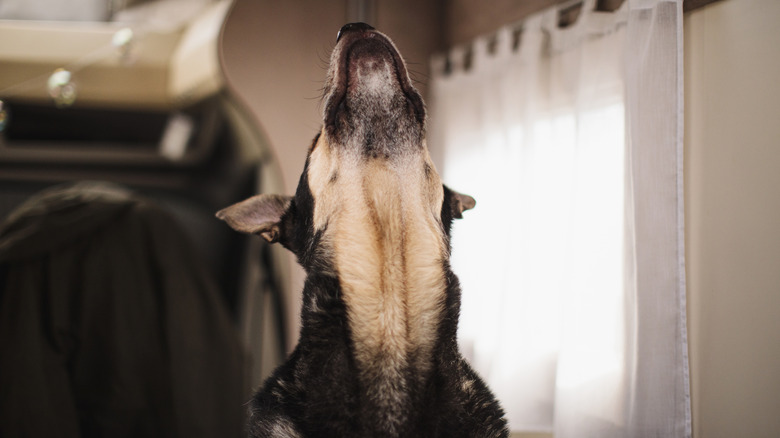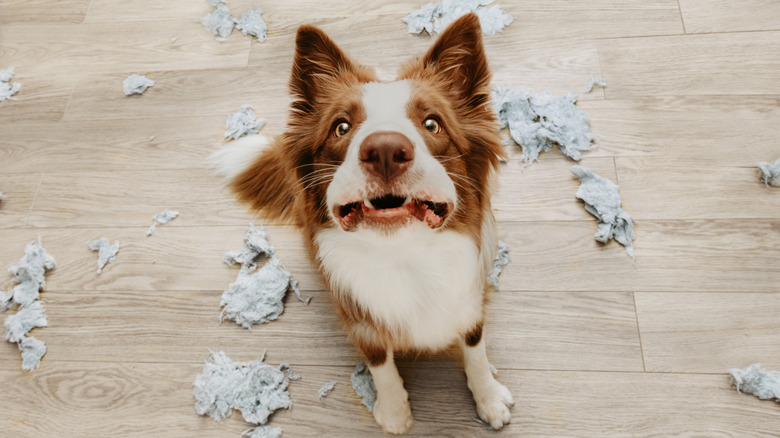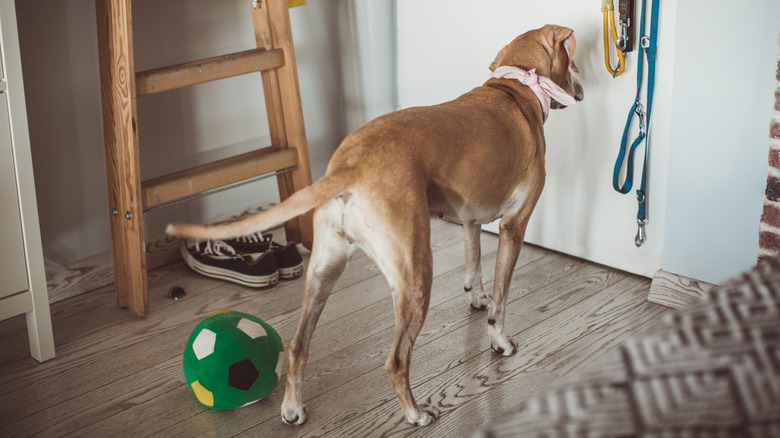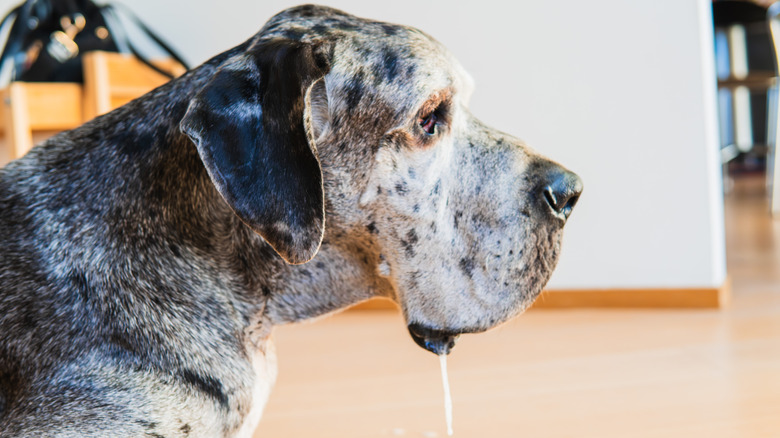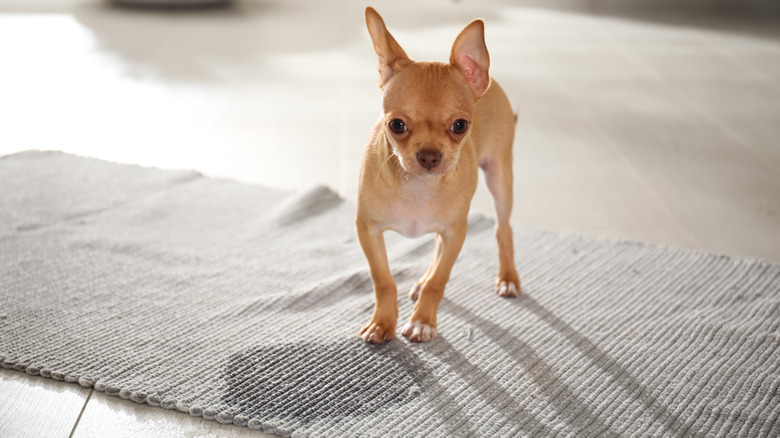5 Telltale Signs Your Dog Has Separation Anxiety
We may receive a commission on purchases made from links.
One of the downsides to being man's best friend is that sometimes your best friend has to leave you alone for a few hours while they go out and socialize or go to work. If you're a dog, that can be harrowing! If you're a human pet parent, though, dealing with a pup who's experiencing separation anxiety can feel at once frustrating, overwhelming, and sad. You don't want your dog to be uncomfortable when you leave the house without them, but you also need to be able to do so.
You may be asking yourself: How long can you leave a dog home alone? The answer is that it varies based on your individual pet. Some dogs are more happy to be left alone than others. It's often very obvious that your dog is not happy to be left home alone. They may, to put it simply, freak out when you start gathering your things to head out, whining, running in circles, etc.
But sometimes, the signs of separation anxiety aren't as obvious or start after you've already left, in which case it can be difficult to be sure what your dog is feeling. Below are some common signs of separation anxiety to take into consideration. Keep in mind that your dog may not display some of these in your presence.
1. Excessive howling or barking
If you hear your pup yapping, howling, or barking incessantly when you leave your home — and there's no squirrel or mailman in sight — that's a strong indicator that they are experiencing separation anxiety. It can be painful for pet parents to hear, stressful for your pup, and if you have close neighbors, it can be quite a nuisance for others as well.
There are different management tactics you may consider employing if your dog barks excessively during the time they're left alone, but training them to learn to stay calm while they're by themselves is the best fix. Teach them to be relaxed while on a mat or in a crate and reward them anytime they display that behavior in that location. Then, slowly increase the amount of time they spend there. It's not easy, and it's not quick — it requires lots of patience and consistency — but it can be quite effective.
2. Destructive behavior
No dog owner survives pet parenthood with all their shoes, socks, rugs, or pillows intact. However, if your dog goes a little extra bonkers with the chewing, scratching, or shredding when you leave them alone, you can be relatively sure that they are taking out their anxiety on your carpet or your table legs. The best thing to do when your dog is exhibiting destructive behavior is to remove any objects that could potentially hurt your pet from the area they'll be staying in. Don't leave chocolate on the counter or wires plugged in if you know your pup will go to town on them.
There are times when it's best to seek out professional help. If your pup is so anxious that they are causing excessive damage to their surroundings, or even harming themselves, it may be time to talk to your vet about additional treatments. There are medications for anxiety, but these must be prescribed by your dog's veterinarian.
3. Trembling and pacing
Sometimes, separation anxiety in dogs manifests in physical ways, such as trembling or pacing around their space. This is hard on your pup. You don't want to see them stressed out. There are several things you can do to try to ease their nervousness before you leave. Try going for a tiring walk about 30 minutes before you head out. Expending lots of energy may make them more inclined to relax or maybe even take a nap while they're alone.
Bringing your dog back to a lower level of anxiety through exercise and distraction can help. A tired dog is more likely to be calm and open to training techniques that can address separation anxiety. Second, try leaving them with a toy specifically designed to be chewed on for long periods of time. It should be a toy your dog really loves and already responds to when you're home. Something like the Fuufome Toy for Aggressive Chewers can help refocus their behavior.
4. Salivating, panting, and licking
If you have a drooly pup, they may drool even more from stress, including separation anxiety. Panting and licking are other symptoms as well, and sometimes, dogs will lick themselves excessively until they've developed hot spots or raw paws. It's always best to first rule out any health issues that could also cause these symptoms. If they check out healthy, the tactics discussed above could help immensely in these anxiety-inducing situations.
In addition, if your dog gets anxious partly due to loud noises or outside disturbances, you can do things to keep their environment peaceful and quiet to help them stay calm. Close curtains and windows, confine them to a relatively quiet room, and even leave the radio or a white noise machine on at a low volume. These may be the measures your pup needs to stay cool and collected when they're home by themselves.
5. Urinating or defecating inside
There are several ways a dog with separation anxiety may damage your home, and unfortunately, urinating or defecating inside is one of them. Sometimes, dogs who seem to be totally house-trained when their owners are home may lose control when they're left alone. It's a difficult situation, and you may be wondering just what to do — especially if it's because your dog has separation anxiety. Using an enzymatic cleaner or keeping your pup in an easy-to-clean room while addressing their separation anxiety may make things easier.
Luckily, as we've highlighted above, there are tons of things to try and the list doesn't end there. You may not know which one will work for your pup until you've put in a fair amount of effort. While you are in the process of training a dog to cope with their separation anxiety, consider a pet sitter or dog walker who can break up the time they spend alone. Remember, don't punish your dog for something they did while you were away. Positive reinforcement training is always the way to go. With a little extra effort, love, and some hard work, you can help keep your pup feeling comfortable even when you're not home.
Always consult your veterinarian before making changes to your pet's diet, exercise, or care. To find an accredited veterinarian in your area, you can search the American Animal Hospital Association's online database.
